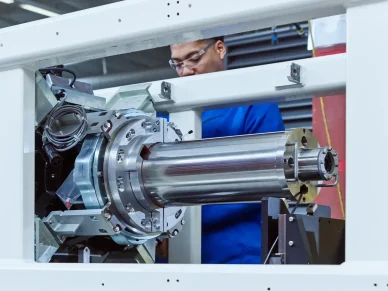How to be eco-friendly when serving a meal
 It’s a conversation had in many office lunchrooms and home kitchens. People want to do the responsible, eco-friendly thing when it comes to serving meals, but they aren’t sure how. Disposable plates and flatware get thrown away, and that’s not good, but isn’t the dishwasher using a lot of water? We have to conserve water, too. What’s the right way to go? Is there no right action? Should we, like the wandering Trojans of the Aeneid, resort to eating our tables? OK, calm down. Take a deep breath. We have some answers for you.
It’s a conversation had in many office lunchrooms and home kitchens. People want to do the responsible, eco-friendly thing when it comes to serving meals, but they aren’t sure how. Disposable plates and flatware get thrown away, and that’s not good, but isn’t the dishwasher using a lot of water? We have to conserve water, too. What’s the right way to go? Is there no right action? Should we, like the wandering Trojans of the Aeneid, resort to eating our tables? OK, calm down. Take a deep breath. We have some answers for you.
Dishwasher vs. disposables
Assuming you have a dishwasher made in the last decade—and given their average life spans, odds are you do—it uses about 4 to 6 gallons of water load. If you have an ENERGY STAR-certified model, it’s anywhere from 12 to 30% more efficient than other models. There are simple ways you can increase the efficiency, as well. For starters, only run the dishwasher on a full load. If it’s half-full when you run it, you’re wasting water. Don’t worry that it’s not powerful enough for your mess. ENERGY STAR models come equipped with soil sensors that detect how dirty your dishes are and adjust accordingly. They also have rack designs that make sure water sprays efficiently throughout the wash cycle. For that matter, you don’t need to worry about pre-rinsing your dishes. A simple scrape of any remaining food on your plate is fine. Your dishwasher can handle the rest. If you want to save more energy, you can switch off the heated dry mechanism and let your dishes air-dry.
 The efficiency of your model determines how many uses it takes for washing a reusable dish to be better for the environment than using a comparable disposable dish. For items such as glass and plastic cups, that total can be as low as six or seven uses. For ceramics, it can be as low as 15 uses. Ceramics and glass are also recyclable. In contrast, disposable cups, plates, and flatware often are not. Either they aren’t recyclable because they’ve had food on them or because not all plastics are recyclable. Once they get to a landfill—requiring the energy used by a garbage truck to get them there—they don’t biodegrade. They sit there for decades, even paper cups that have a plastic lining. Sitting in a landfill is actually a better case scenario. Worse is the possibility that these single-use disposables end up in the ocean, which is how we got the Great Pacific Garbage Patch.
The efficiency of your model determines how many uses it takes for washing a reusable dish to be better for the environment than using a comparable disposable dish. For items such as glass and plastic cups, that total can be as low as six or seven uses. For ceramics, it can be as low as 15 uses. Ceramics and glass are also recyclable. In contrast, disposable cups, plates, and flatware often are not. Either they aren’t recyclable because they’ve had food on them or because not all plastics are recyclable. Once they get to a landfill—requiring the energy used by a garbage truck to get them there—they don’t biodegrade. They sit there for decades, even paper cups that have a plastic lining. Sitting in a landfill is actually a better case scenario. Worse is the possibility that these single-use disposables end up in the ocean, which is how we got the Great Pacific Garbage Patch.
Dishwasher vs. handwashing
As noted, with quality dishwashers these days, there’s no need to pre-rinse. The reason not to is that rinsing uses more water than a dishwasher does—up to five times as much if you were to pre-rinse an entire load of dishes. Washing an entire load by hand uses even more water than that, up to 27 gallons. To properly sanitize dishes, the water has to be at least 140 degrees Fahrenheit, way too hot to be comfortable There’s a reason we invent technology: It usually works better and more efficiently than doing things by hand, and it makes our lives a lot easier. Sure, the T-800 Model Terminator wasn’t so great, but dishwashers are on our side.
Biodegradable disposables
In the long run, not only is putting reusable dishes in the dishwasher more eco-friendly than disposable dishes, it’s more cost-effective. We get it, though: sometimes it’s impractical to use real dishes. Maybe you’re feeding a large group at an outdoor barbecue. Well, if you’re among the growing percentage of consumers willing to pay more for a sustainable option, there are plenty of biodegradable disposable dishes.
 Using bagasse—sugarcane pulp—companies such as Eco-Products and Pack ‘n’ Wood transform a natural byproduct that would be thrown away and turn it into an excellent substitute for a Styrofoam plate. They even make utensils, so you can have biodegradable knives, forks, and spoons to go along with your plate. For sturdier options you can reuse a few times, bamboo makes for a stylish alternative. EcoPartyTime has packages for all occasions. VerTerra’s palm leaf and balsa wood dishes are certified compostable and free of chemicals, waxes, and dyes.
Using bagasse—sugarcane pulp—companies such as Eco-Products and Pack ‘n’ Wood transform a natural byproduct that would be thrown away and turn it into an excellent substitute for a Styrofoam plate. They even make utensils, so you can have biodegradable knives, forks, and spoons to go along with your plate. For sturdier options you can reuse a few times, bamboo makes for a stylish alternative. EcoPartyTime has packages for all occasions. VerTerra’s palm leaf and balsa wood dishes are certified compostable and free of chemicals, waxes, and dyes.
If you’re really in the mood for leaving no trace—or looking to fulfil your destiny as the founder of the Roman race—there are edible dishes on the market. Biotrem makes bowls, plates, and flatware from wheat bran, and as a treat you can serve up dessert in Lang’s chocolate shells. Buon appetito!
















Leave a Reply